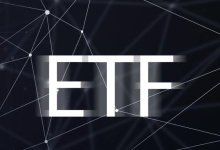Hyperliquid Loses Ground as Rivals Gain Market Share


Hyperliquid, one of the largest decentralized perpetual futures platforms, is facing mounting pressure as rivals Aster and Lighter continue to capture market share. Recent data from multiple industry trackers shows that while Hyperliquid still commands a strong lead in open interest, its daily and monthly trading volumes have experienced a marked decline. The trend signals a shift in competitive dynamics across decentralized derivatives markets, where quick-moving incentives and user adoption can rapidly alter the balance of power.
Rivals surpass Hyperliquid in daily volumes
On September 23, CoinDesk reported that Hyperliquid’s share of perpetual futures trading collapsed to around 38 percent, down sharply from the levels it held earlier this year. The drop coincided with aggressive user acquisition campaigns by competitors Aster and Lighter, both of which have leveraged liquidity incentives and community-driven trading events to draw market participants. By September 24, Cointelegraph confirmed that Aster had overtaken Hyperliquid in daily trading volumes. However, Hyperliquid remained ahead on longer time frames, retaining leadership in seven-day and 30-day average trading activity.
Yahoo Finance coverage reinforced the point, noting that Aster’s rising popularity reflects a growing appetite for alternatives in the decentralized trading ecosystem. Bitget News also echoed the figure of 38 percent market share for Hyperliquid, suggesting that its decline is not an isolated statistic but part of a wider industry reshuffle. The emergence of these competitors has shifted attention toward the sustainability of Hyperliquid’s growth model.
Monthly data shows deeper contraction
Monthly statistics illustrate a more significant shift in volumes. CryptoRank reported that in September, Aster closed with approximately $420 billion in trading volume, securing the top spot among decentralized platforms. Hyperliquid, in contrast, processed $282.5 billion, representing a month-on-month decline of nahead 29 percent compared to August. The numbers underscore how rapidly market sentiment can pivot in the face of rising competition.
Despite the decline in raw trading volumes, Hyperliquid continues to dominate open interest, a key metric reflecting the total value of active contracts. Analysts, including Patrick Scott, point out that Hyperliquid’s sustained open interest of more than 60 percent demonstrates deeper liquidity and ongoing trader confidence. This suggests that while the platform’s headline volume figures have been challenged, its role as a primary venue for larger, more sophisticated traders remains intact.
The shifts in market share highlight the volatility and competitive intensity of decentralized derivatives markets. platforms such as Aster and Lighter are demonstrating that targeted incentives, strong liquidity programs, and innovative user experiences can rapidly attract market share. For Hyperliquid, the challenge will be balancing its dominance in open interest with the need to recapture growth in trading volumes.
As the decentralized finance sector continues to evolve, the contest between Hyperliquid and its rivals illustrates a broader theme: leadership in decentralized platforms is far from static. Market participants will be watching closely to view whether Hyperliquid can rebound or if Aster and Lighter will consolidate their momentum in the months ahead.







